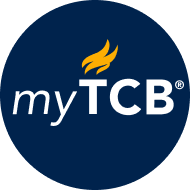


Members of The Conference Board get exclusive access to the full range of products and services that deliver Trusted Insights for What's Ahead ® including webcasts, publications, data and analysis, plus discounts to conferences and events.
19 November 2025 / Quick Take
This week, the Securities and Exchange Commission (SEC) announced that companies may now exclude shareholder proposals from proxy statements without first obtaining staff review or a “no-action” response under Rule 14a-8. The change, outlined by the SEC’s Division of Corporation Finance, applies to the 2025–2026 proxy season and marks a sharp departure from the staff’s historic gatekeeping role.
This week, the Securities and Exchange Commission (SEC) announced that companies may now exclude shareholder proposals from proxy statements without first obtaining staff review or a “no-action” response under Rule 14a-8. The change, outlined by the SEC’s Division of Corporation Finance, applies to the 2025–2026 proxy season and marks a sharp departure from the staff’s historic gatekeeping role.
Companies must still notify both the SEC and proponents at least 80 days before filing their definitive proxy materials, as required under Rule 14a-8(j). However, issuers will now decide independently whether a proposal may be excluded, leaving proponents to challenge exclusions retroactively through litigation or commission appeal. Limited review will continue only for requests made under Rule 14a-8(i)(1)—which applies to proposals that may be excluded under state law—but the division will no longer issue responses or “no-action” positions on other bases for exclusion.
The division attributed the change to resource and timing constraints following the recent government shutdown and the extensive guidance already available to companies. The shift reflects a broader effort to streamline staff responsibilities and reduce the commission’s direct involvement in individual exclusion determinations, effectively scaling back the SEC’s longstandin
Senior Researcher, Corporate Governance
The Conference Board

myTCB® Members get exclusive access to webcasts, publications, data and analysis, plus discounts to events.
You already have an account with The Conference Board.
Please try to login in with your email or click here if you have forgotten your password.

AI Risk Moves Mainstream: What Industry Leaders Are Disclosing
October 10, 2025

